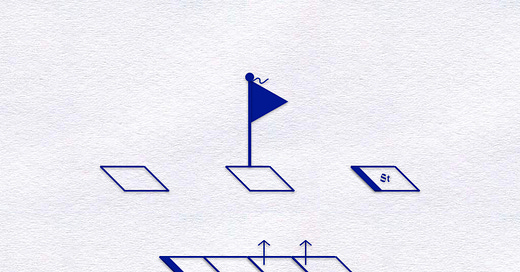The following is a verbatim translation of an article that appeared in the Armored Troops Newsletter [Nachrichtenblatt der Panzertruppen] in February of 1944.
A tank battalion which served on the Eastern Front as part of a tank regiment provides the following “lessons-learned report. It was was equipped with 49 Mark IV tanks with long-barreled 75mm guns and 44 assault guns. The tanks were organized into (two companies and a reconnaissance platoon. The assault guns were formed into two companies.
A. Employment of Assault Guns in the First Attack Wave
1. Advantage:
The assault gun offers a smaller target than the Mark IV tank
2. Disadvantages:
a) Lack of a rotating turret. Because of this:
Assault guns deviated sharply from the direction of attack in order to combat enemy attacks arising from the flanks.
Heavy demands were made on the suspension and brakes, especially during major changes of position or direction on hard ground during the rainy period.
b) Lack of a machine gun under armor.
Because of this it was not possible to combat enemy infantry (tank destruction teams!) during the break-in or break-through of an enemy position. The machine gun shield offered no protection against antitank rifle fire from the front or infantry fire from the sides.
B. Employment of Assault Guns in the Second Wave and as Flank Protection:
1. Advantage:
Assault guns in covered positions can let enemy armored attacks run right up to them.
2. Disadvantage:
During attacks against a threat to a flank the same problems mentioned in A2 occur.
C. Assault Guns Cooperating with Panzergrenadier Units.
1. Advantages:
a) Assault guns beat down enemy heavy weapons (tanks, antitank guns, guns, heavy machine guns) while the Panzergrenadier units combat the enemy infantry and keep them at arms length from the assault guns.
b) Assault guns give moral support to Panzergrenadier units, particularly during tank attacks.
D. Assault Guns in the Defense
[Assault guns were] mostly employed as a mobile antitank defense. They operated from positions behind the main line of resistance that had been previously reconnoitered . If possible, this reconnaissance was carried out on foot.
Comments of the Inspector General of Armored Troops
1. In order to avoid misunderstandings, remember that the employment of assault gun units described here deals only with those employed as part of a tank regiment, not those of the assault gun battalions assigned to infantry divisions.
2. The inclusion of assault guns in tank regiments is only a temporary solution [to a shortage of tanks.]
3. Compared to the Mark IV tank the assault gun has the following advantage:
It has a low height and thus presents a small target.
4. The disadvantages are:
a) Lack of a turret and thus the ability to fire the gun to the sides or rear.
b) No machine gun capable of 360° fire. This greatly reduces the capability for close combat.
c) Less room for ammunition. (The assault gun carries 44 rounds of main gun ammunition. The Mark IV tank carries 87 rounds of main gun ammunition.) 4. The achievements and particularities of the assault guns permit neither independent employment nor dispensing with tanks or Panzergrenadier units. Their advantages mark them as tank hunters [Panzerjäger.] This is how we should think of the employment of tank battalions that are partially equipped with assault guns and employed as part of tank regiments and armored divisions.
5. Attack.
a) The assault gun units of a tank battalion cannot fight independently the way that tank units do. Instead, support or over-watching by tank or Panzergrenadier units is required. Therefore one should try to employ assault gun units or mixed units of tanks and assault guns in the second wave, where they can cooperate with the Panzergrenadier units.
b) Tank battalions, which are equipped with Mark III tanks or Mark IV tanks with thin (50mm) frontal armor can be reinforced with assault gun platoons or companies for use for special assignments (to form the point of a tank formation or for attacks with limited objectives.) In those cases the assault guns would fight in the first wave.
c) In encounters with enemy tanks, the assault guns should be pushed forward, in order to free the tank elements of the regiment to encircle the enemy tanks.
d) Assault gun units can be used as tank hunters (Panzerjäger) following behind the regiment, so that they can, if necessary, protect the flanks and support the regiment if it runs into enemy tanks.
6. Defense
In the defense, assault gun units are, like tank units, are to be held in readiness in order to counterattack with the Panzergrenadier units. An assault gun unit can be assigned the particular mission of serving as a tank hunter outfit.
7. Withdrawal
Breaking contact with the enemy is often facilitated by attacks with limited objectives by assault guns working with tanks and Panzergrenadier units. The attack is to be carried out as explained in paragraph 5.
Copies of this, as well as many other issues of the Nachrichtenblatt der Panzertruppen, have been preserved on microfilm by U.S. National Archives (Series T-78, Roll 623.)





